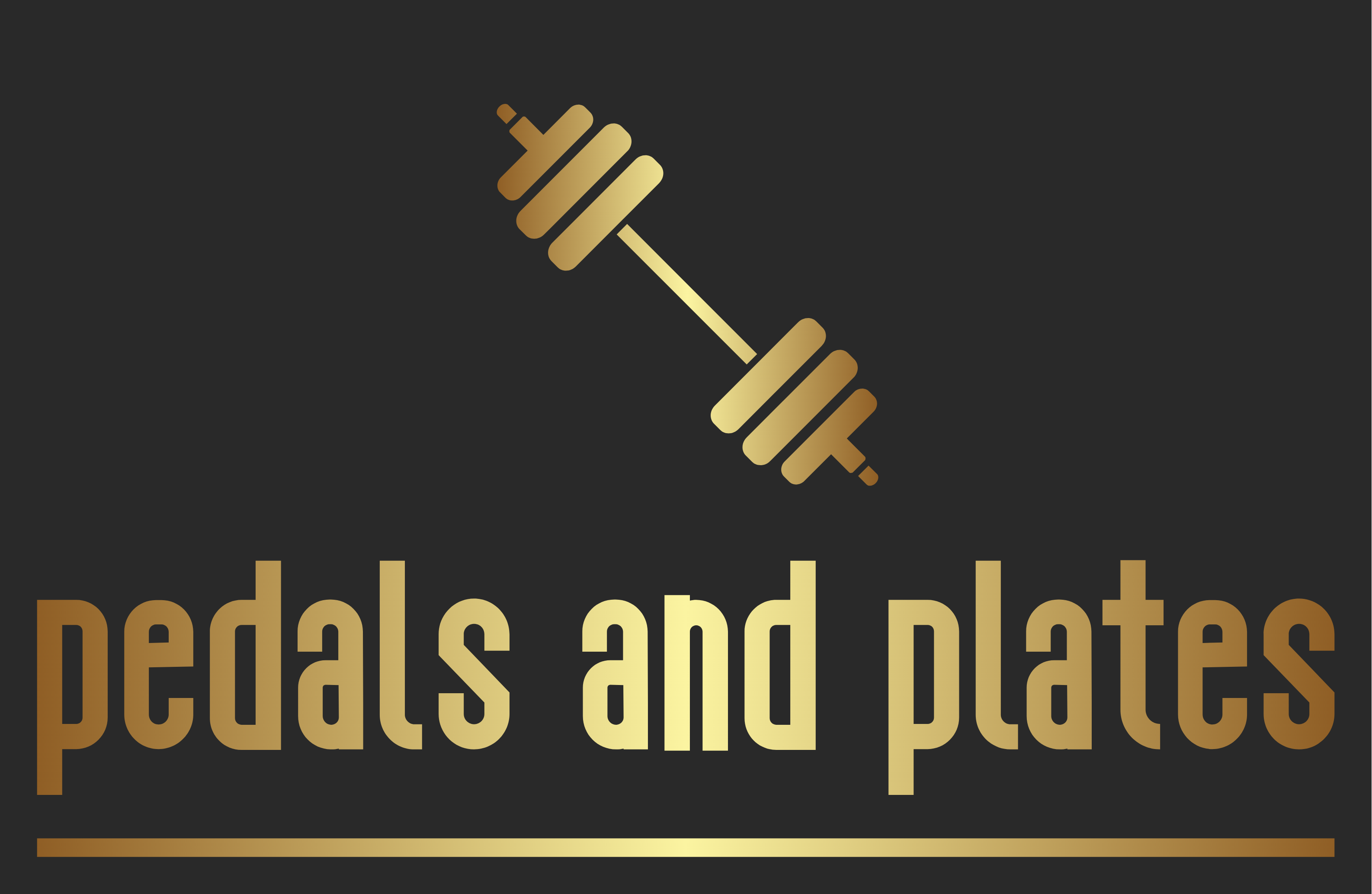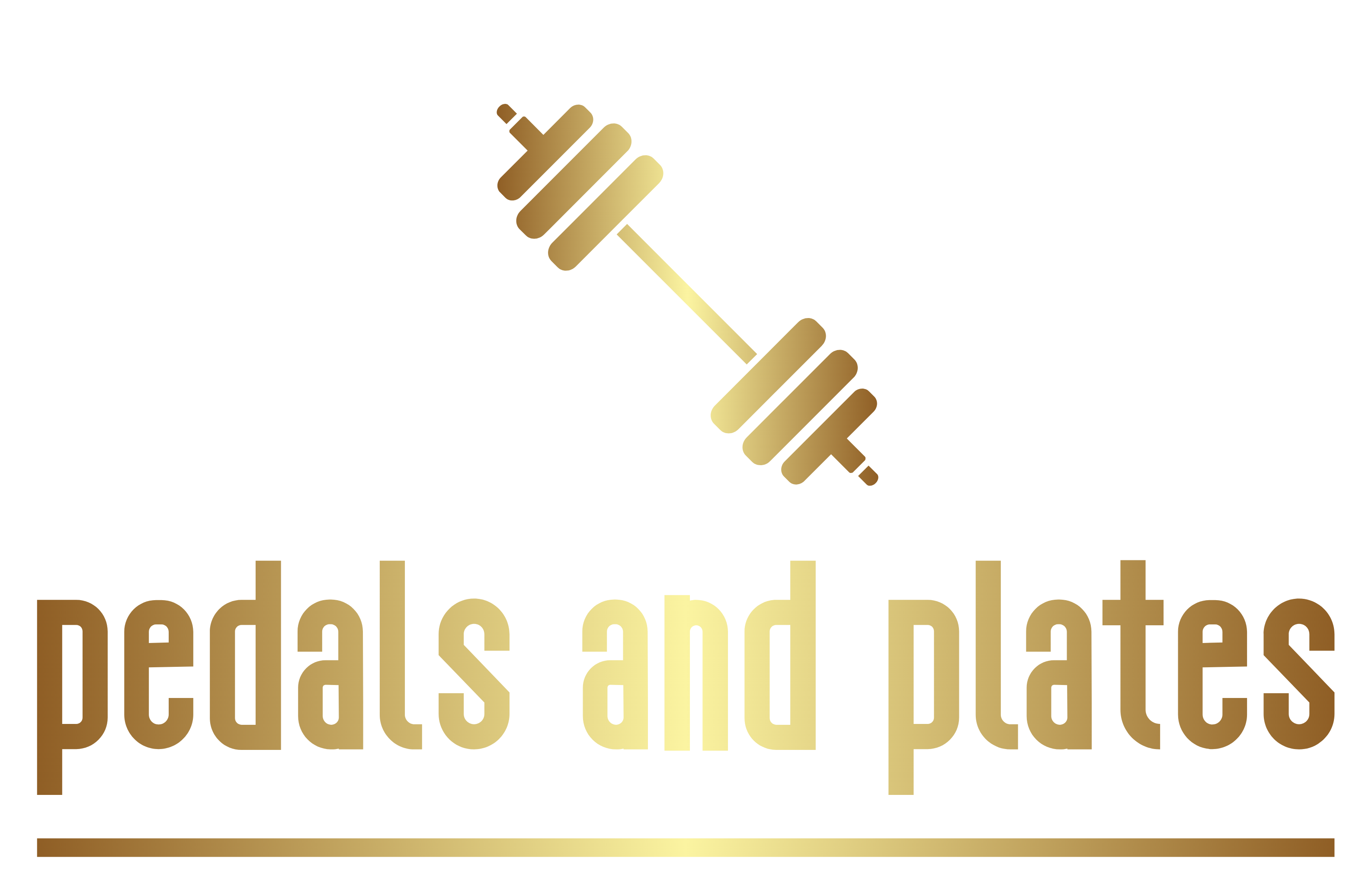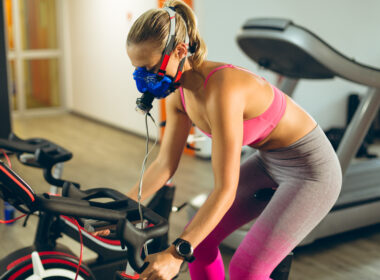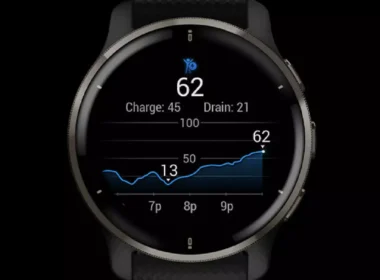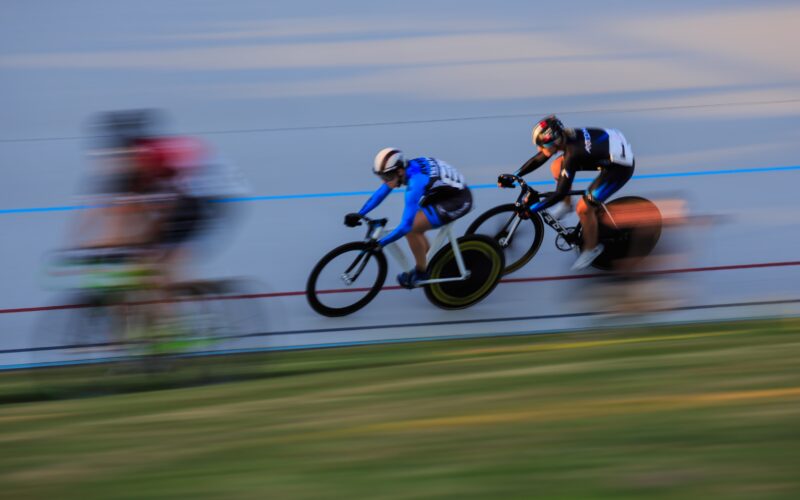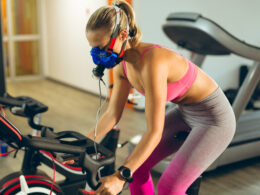Track sprinting is a high-intensity, explosive sport that requires immense power, agility, and speed. Sprint workouts are essential for track sprinters to improve their performance and succeed in various sprint events such as the kilo, 500m, 750m, Match Sprint, and Keirin.
This article will cover six scientifically based exercises that track sprinters can do to increase their speed immediately.
Table of Contents
Which Muscles do you use in sprinting?
Quadriceps: The Powerhouse of Sprinting
Sprinting is an explosive activity that requires a lot of power from your legs, particularly your quadriceps. When you pedal the bike, these four muscles at the front of your thigh extend and straighten your leg. Sprinters rely heavily on their quads to generate force for each pedal stroke they take.
As one of the quadriceps muscles, the rectus femoris contributes to generating power during the downstroke phase of pedaling. It assists in extending the knee joint, helping to push the pedal downward. This action is crucial for generating force and propelling the bicycle forward.
During cycling, the rectus femoris coordinates with the other quadriceps muscles, such as the vastus lateralis, vastus medialis, and vastus intermedius, to create a smooth and efficient pedal stroke. Together, they provide the strength and power to maintain a steady cadence and generate force throughout the cycling motion.
Hamstrings: Your Body’s Brakes
While your quadriceps provide most of the power for sprinting, it’s also essential to have strong hamstrings. These three muscles at the back of your thigh work together to flex your knee joint and extend your hip joint. They act as brakes during each stride, slowing down your leg as it swings forward and preventing it from hyper-extending.
Weak hamstrings can lead to injuries such as hamstring strains or tears, which are debilitating for sprinters. Therefore, incorporating deadlifts or hamstring curls into your training routine can help build strength in these critical muscles.
Glutes: The Secret Weapon
Your gluteal muscles (glutes) are often overlooked but play a crucial role in generating power during each stroke. These three muscles in your buttocks extend and rotate your hip joint, allowing you to push off the ground with force.
Studies have shown that stronger glutes are associated with faster sprint times since they contribute significantly to acceleration and top speed. Incorporating exercises like squats or lunges into your training routine can help strengthen these essential muscles.
Calves: The Spring in Your Step
Calves play a vital role in cycling, contributing to speed and power by extending the ankle joint during pedal strokes. Strengthening exercises like calf raises or plyometric jumps can enhance calf muscle strength for improved performance on the bike.
In cycling, your calves act as energy reservoirs, storing and releasing energy with each revolution of the pedals, enabling powerful propulsion. Developing strong calves is crucial for track cyclists aiming to optimize their sprinting abilities.
Core Muscles: The Foundation of Your Movement
Finally, strong core muscles are essential for sprinting since they provide stability and support for your entire body. Your core includes all the muscles in your torso, including your abdominals, obliques, and lower back muscles.
A weak core can lead to poor cycling form, slowing you down and increasing your risk of injury. Incorporating exercises like planks or Russian twists into your training routine can help build a strong foundation for your movement.
Six Science-Based Exercises to Make Your Sprint Faster
Jump Squats
The jump squat has improved sprint times in multiple studies, including one with 60 subjects. This study found that eight weeks of jump squats significantly improved 50-meter run sprint times. In the first four weeks, they did eight sets with four reps, and in the last four weeks, they did four sets with eight reps, with three minutes of rest between each set. They performed this exercise three times per week for eight weeks.
A question arises: Should you train with light weights at high speed or heavy weights at a slower speed? This study put it to the test. Group one used 30 percent of their body weight, while group two used 80 percent of their body weight. The study found that the group that used 30 percent ran significantly faster, while the group that used 80 percent ran significantly slower. Performing jump squats barefoot on a moderately soft surface can further enhance the exercise, as it allows for better engagement of foot muscles, calves, and softer landings.
Hip Flexor Training
Research shows that hip flexor strength training using elastic resistance improves sprint times, especially in the 10 and 40-yard sprints. In a study, the subjects trained three times per week for eight weeks, performing one hip flexor exercise with elastic resistance for three sets of 10 reps, using 75 percent of their one-rep max. The final set was performed to failure.
This type of training focuses on developing powerful hip flexors from a static position, which translates well to the sprint start. If an elastic band is unavailable, a cable machine with an appropriate attachment can be used as an alternative.
Romanian Deadlifts
Literature suggests that exercises that activate the glutes and hamstring muscles, such as Romanian deadlifts, improve maximum speed sprinting. Eccentric training, which emphasizes the lowering phase of the movement, is more effective than concentric training for improving sprinting ability. Thus, combining the concepts of glute and hamstring activation with eccentric training makes Romanian deadlifts a logical choice.
In a study, eccentric training was performed twice a week for six weeks, starting with one set and progressively adding sets each week for six sets by week six. Single-leg Romanian deadlifts can further enhance the exercise, but proper form and coordination are crucial. Using a foam roller for posture correction and a kettlebell to ensure adequate depth can help achieve the desired results.
Sled Pushing
Sled pushing has been found to improve sprint times in studies significantly. In one eight-week study, subjects who performed sled pushes showed significant improvements in 5 to 20-meter sprint times, while the group that did unresisted sprint training showed no improvements.
Sled pushing facilitates correct posture for acceleration, allowing athletes to get low, which is challenging without the sled. Additionally, it teaches the feeling of driving the leg back into the ground behind the center of gravity without the fear of falling. Training sessions with light, moderate, and heavy loads were conducted twice a week, with heavy loads yielding the most improved sprint times.
Hip Thrusts
There is some controversy surrounding whether hip thrusts transfer well to sprinting. However, a meta-analysis reviewed six studies and found four out of six reported significant improvements in sprint times with hip thrusts. The key factor appears to be using lighter weights at higher velocities. In these studies, the benefits were observed after just eight weeks of training or even less in some cases. One study implemented four sets weekly, gradually working from a 12-rep max to a six-rep max.
Single-leg variations can be incorporated to enhance the effectiveness of hip thrusts further. Since sprinting is a single-leg movement, targeting each leg individually makes sense. Elite sprinters like Asafa Powell and Tyreek Hill have utilized single-leg hip thrusts in their training.
Nordic Curls
The hamstrings play a crucial role in sprinting, and training them for strength and injury prevention is important. Nordic curls have been proven effective in multiple studies, including a meta-analysis, for preventing hamstring injuries and improving sprint performance in 10-meter sprints.
In a 10-week training program, the frequency of Nordic curls increased from once a week to three times per week. The volume gradually increased, with two to three sets of five to twelve reps performed. Nordic curls are considered one of the most challenging hamstring exercises, and only a few athletes, such as Greg Pignataro and Martin St. Louis, can perform them with a full range of motion. Using a medicine box can assist in achieving greater depth and time under tension during the exercise.
Here’s an updated table with the exercises, agonist muscle, and synergist muscle:
| Exercise | Agonist Muscle | Synergist Muscle |
| Jump Squats | Quadriceps | Glutes, Calves |
| Hip Flexor Training | Hip Flexors | Quadriceps |
| Romanian Deadlifts | Hamstrings, Glutes | Erector Spinae, Calves |
| Sled Pushing | Quadriceps, Glutes | Hamstrings, Calves |
| Hip Thrusts | Glutes, Hamstrings | Quadriceps, Calves |
| Nordic Curls | Hamstrings | Glutes |
The table overviews each exercise’s primary agonist and synergist muscles. The agonist muscle is responsible for producing movement and generating force, while the synergist muscles assist in performing the movement, providing support, stability, and additional force. The listed synergist muscles in the table work together with the agonist muscle to enhance the effectiveness of the respective exercise.
The Plan
Here’s a workout plan utilizing the six scientifically proven exercises to improve sprinting speed. Each exercise is listed with the recommended number of sets, reps, and weights:
| Exercise | Sets | Reps | Weight | Rest |
| Jump Squats | 4 | 8 | Body weight or 30% of body weight | 3 minutes between sets |
| Hip Flexor Training | 3 | 10 | 75% of one-rep max for elastic resistance exercises | As needed between sets |
| Romanian Deadlifts | 1 (Week 1), gradually increase to 6 (Week 6) | 10 (Week 1), maintain or adjust as needed | Challenging weight for the desired rep range | As needed between sets |
| Sled Pushing | 2 | 20-50m | Light, moderate, and heavy loads (progressively increase over the weeks) | As needed between sets |
| Hip Thrusts | 4 | Start with 12 reps, gradually decrease to 6 reps (Week 6) | Moderate weight for desired rep range | As needed between sets |
| Nordic Curls | 2 (Week 2), increase to 3 (Weeks 3-6) | 5-12 | Challenging weight for desired rep range | As needed between sets |
Note: It’s important to adjust the weight according to your fitness level and capabilities. If you need more clarification about the appropriate weight, start with lighter loads and gradually increase as you become more comfortable and confident in your form and strength. Always prioritize proper form and listen to your body.
Conclusion: Mastering Track Sprinter Exercises for Optimal Performance
In conclusion, mastering track sprinter exercises is crucial for any athlete who wants to improve their performance on the track. By targeting the specific muscles used in sprinting, athletes can increase their speed and power, giving them an edge over their competitors.
Athletes can improve their sprinting abilities and achieve optimal performance through the six science-based exercises outlined above. By incorporating these exercises into their training regimen, athletes can build strength and endurance in the key muscle groups used in sprinting.
It’s important to remember that mastering track sprinter exercises take time and dedication. Athletes should work with a coach or trainer to perform each exercise correctly and safely. Athletes should focus on proper nutrition and rest to support muscle growth and recovery.
By consistently incorporating these exercises into their training routine, athletes can take their sprinting abilities to the next level. With hard work and dedication, anyone can become a skilled track sprinter.
References for each exercise:
Romanian DL Research: https://www.academia.edu/17125864/Resistance_Training_for_Short_Sprints_and_Maximum_speed_Sprints
Sled Push Research: https://pubmed.ncbi.nlm.nih.gov/31742795/
Hip Flexion Research: https://www.researchgate.net/figure/Hip-flexion-exercise-using-elastic-tubing-as-the-resistance_fig4_7665815
Hip Thrusts Meta-Analysis: https://www.ncbi.nlm.nih.gov/pmc/articles/PMC6544005/
Nordic Curls Meta-Analysis: https://pubmed.ncbi.nlm.nih.gov/27752982/
Nordic Impact on 10m Sprint Times: https://pubmed.ncbi.nlm.nih.gov/29192837/
